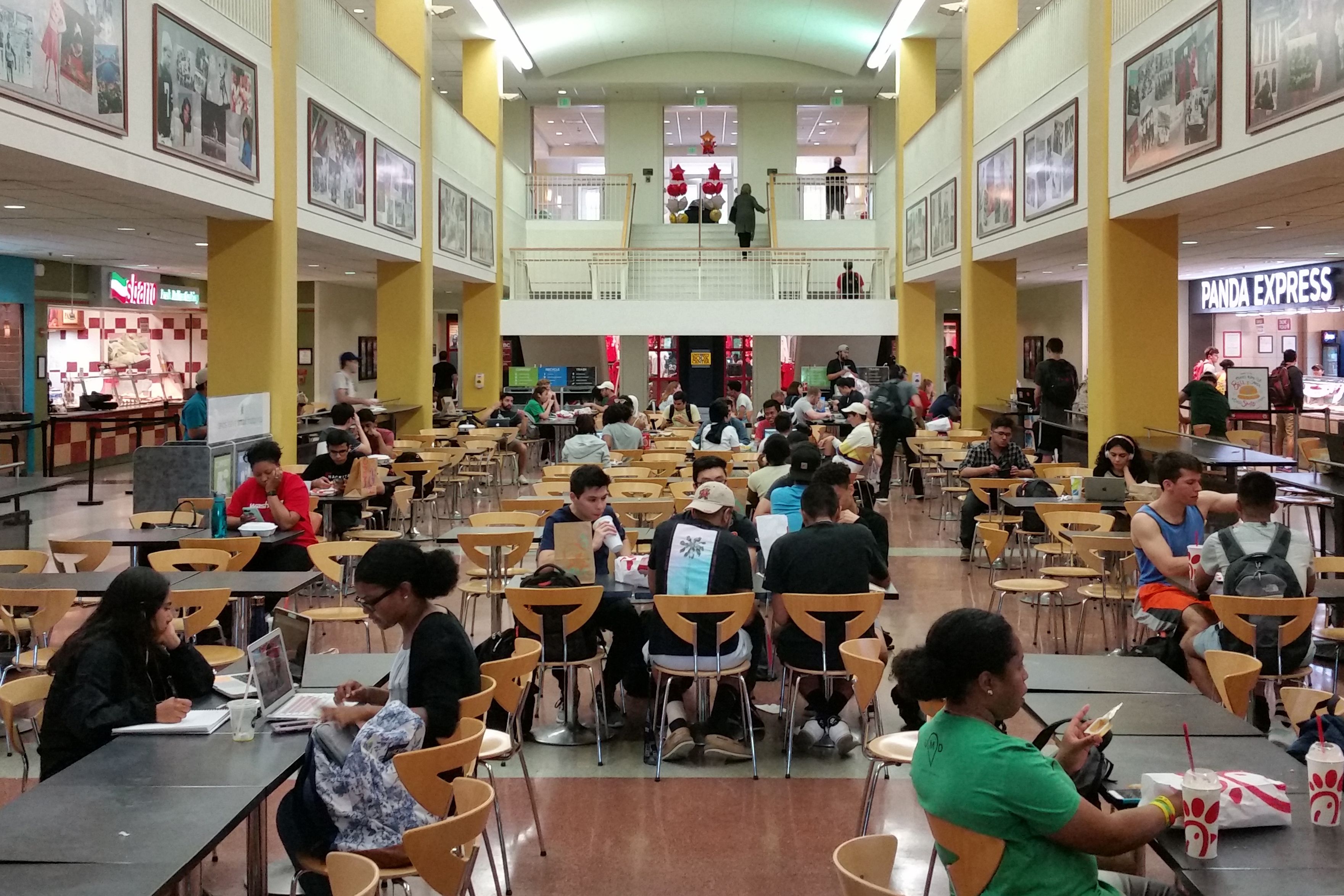The number of out-of-state students is on the rise at the University of Maryland, despite the numerous obstacles they face in affording their education.
In fall 2013, 23.4 percent of undergraduate students resided outside the state. Five years later, it’s ticked up to 25.6 percent. The increase is even sharper among graduate students — from 66.5 percent in fall 2013, to 70.2 percent in fall 2018.
Out-of-state students — the majority from New Jersey, New York and Pennsylvania — now account for 36.9 percent of the student population, according to this university’s Institutional, Research, Planning and Assessment office.
These students deal with extra financial hurdles. This fall, tuition for full-time non-residents ($16,636) was nearly four times that of their in-state counterparts ($4,325.50), and total cost of living was about double. Since fall 2014, out-of-state students have seen their tuition rise by nearly $2,700, compared with an increase of about $500 for Marylanders.

Graphic by Maris Medina/The Diamondback
The university offers merit-based scholarships such as the Pell Grant through FAFSA, as well as freshmen merit scholarships including Banneker/Key, President’s Scholarships and Dean’s Scholarships. Academic departments also offer individual scholarships for students whose majors fall in those departments.
Still, scholarships solely for out-of-state students are harder to come by, especially since many scholarships are reserved for Maryland residents.
Amanda Fiddler, an Illinois native, has struggled for three years to find scholarships that she qualifies for.
“It’s ideal to apply for scholarships in a state I currently live in, but as an out-of-state student, I wasn’t eligible for any of them, which I found very disappointing,” said Fiddler, a junior criminology and criminal justice and government and politics major.
[Read more: UMD graduate assistants say they’re often blindsided by mandatory fees]
Freshmen or transfer students who do find scholarships sometimes have a difficult time keeping them, especially without guidance from the university or academic counselors amid the transition to college. Some merit scholarships are small but require students to meet certain GPA requirements to meet them.
Alex Stifelman of New Jersey lost her scholarship when her GPA dipped before she decided to switch majors. She said there wasn’t a process for explaining her situation to the university or a way for her to get the scholarship back.
“The university could’ve done more to help me keep my scholarship,” said Stifelman, a junior communication and Spanish major. “I wish there was a way to explain how I was struggling. My grades were the lowest in my life, but I took that initiative to change my major and haven’t had that problem since. But there’s no way to reapply.”
On top of financial burdens or academic struggles, some out-of-state students feel out of place when first arriving in College Park.
Even with the recent growth, this university’s out-of-state student population is about average compared to other public Big Ten flagship institutions. The University of Illinois, at the lowest end, is 18.7 percent out-of-staters, while the University of Michigan is almost half out-of-staters at 49.1 percent.

Graphic by Maris Medina/The Diamondback
Organizations like the Out-of-State Student Association work to ease the transition for the nearly 25 percent of students who move to Maryland from another state.
Julia Mikolajczak, a New York native, co-founded the organization to fill in the social and knowledge gaps that non-Maryland natives face when they arrive on campus. She noted the hidden costs that come with coming to a new state.
“Out-of-state students can’t usually commute, so they have to pay for housing. It’s very expensive to travel home,” said Mikolajczak, a junior criminology and criminal justice major. “The cost of flights are really high, [and] the cost of Ubering to airports and train stations are really high if they can’t use the public system.”
Mikolajczak said her organization focuses on giving out-of-state students a support group of others in similar situations and tries to educate students on living in Maryland and close to D.C.
The university offers orientation sessions specifically for new transfer students, and Mikolajczak thinks it should do the same for out-of-state students. Instead, she said, they “just get rammed in with all the other freshmen,” which means they might not learn about everything the area has to offer.
“If you’re an out-of-state student and don’t know how to use the Metro system and don’t have a car, you’re not going to be able to get to D.C.,” Mikolajczak said. “That’s something they never go over during orientation, because they assume that everyone’s from Maryland and that they know that already.”
[Read more: Some Maryland students could receive up to $5,000 for community college]
Some out-of-staters, however, don’t feel their residency status is a tremendous disadvantage. Matt Kalin, who hails from Delaware, doesn’t believe it’s the university’s job to help students adjust to life in a new state.
“My transition was fine, and I didn’t need the university to help me in any way I can think of,” said Kalin, a sophomore computer science and mathematics major. “I didn’t know many people when I got here, but I made more acquaintances and eventually made friends. … Sometimes you just had to go out and meet new people.”
Michael Hinke, a freshman computer science major, found that Maryland was actually less expensive than other out-of-state schools he applied to in his senior year of high school.
Hinke, who lives in Pennsylvania, is in favor of having an orientation specific to non-Marylanders, but he doesn’t think it makes life easier or harder.



